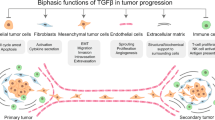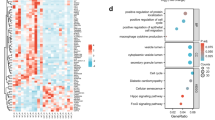Abstract
It has been shown that some types of tumour cells produce activated transforming growth factor beta-1 (TGF-beta 1). However, the mechanism for the activation of TGF-beta 1 derived from tumour cells has not been fully elucidated. The present study was undertaken to characterise an activator of latent TGF-beta 1 secreted from a human gastric cancer cell line, KATO-III. Western blot analyses using antibodies for TGF-beta 1, latency associated peptide (LAP) and latent TGF-beta 1-binding protein (LTBP) revealed that, in the cell lysate of KATO-III, TGF-beta 1 protein was expressed as a small latent complex of TGF-beta 1 and LAP. This was also confirmed by a gel chromatographic analysis of the cell lysate obtained from KATO-III. A 2.5 kb transcript of TGF-beta 1 mRNA was detected in KATO-III cells by Northern blot analysis. A gel chromatographic analysis of the conditioned medium from KATO-III cells revealed, in addition to the active form of TGF-beta 1, a factor which activated latent TGF-beta 1 from NRK-49F cells at fractions near a molecular size of 65,000. This factor was inactivated by heat (100 degrees C), acidification, trypsin and serine protease inhibitors. TGF-beta 1 activity in KATO-III cell lysate was not detected in the untreated state, but potent TGF-beta 1 activity was detected after acid treatment. These results suggest that KATO-III releases not only a latent TGF-beta 1 complex but also a type of serine protease, different from plasmin, plasminogen activator, cathepsin D, endoglycosidase F or sialidase, which activates the latent TGF-beta 1 complex as effectively as acid treatment.
This is a preview of subscription content, access via your institution
Access options
Subscribe to this journal
Receive 24 print issues and online access
$259.00 per year
only $10.79 per issue
Buy this article
- Purchase on SpringerLink
- Instant access to full article PDF
Prices may be subject to local taxes which are calculated during checkout
Similar content being viewed by others
Author information
Authors and Affiliations
Rights and permissions
About this article
Cite this article
Horimoto, M., Kato, J., Takimoto, R. et al. Identification of a transforming growth factor beta-1 activator derived from a human gastric cancer cell line. Br J Cancer 72, 676–682 (1995). https://doi.org/10.1038/bjc.1995.393
Issue date:
DOI: https://doi.org/10.1038/bjc.1995.393
This article is cited by
-
The effects of TGF-β1 on the expression of type IV collagenases in mouse peritoneal macrophages
Molecular Biology Reports (2011)
-
Latent transforming growth factor-β: Structural features and mechanisms of activation
Kidney International (1997)



